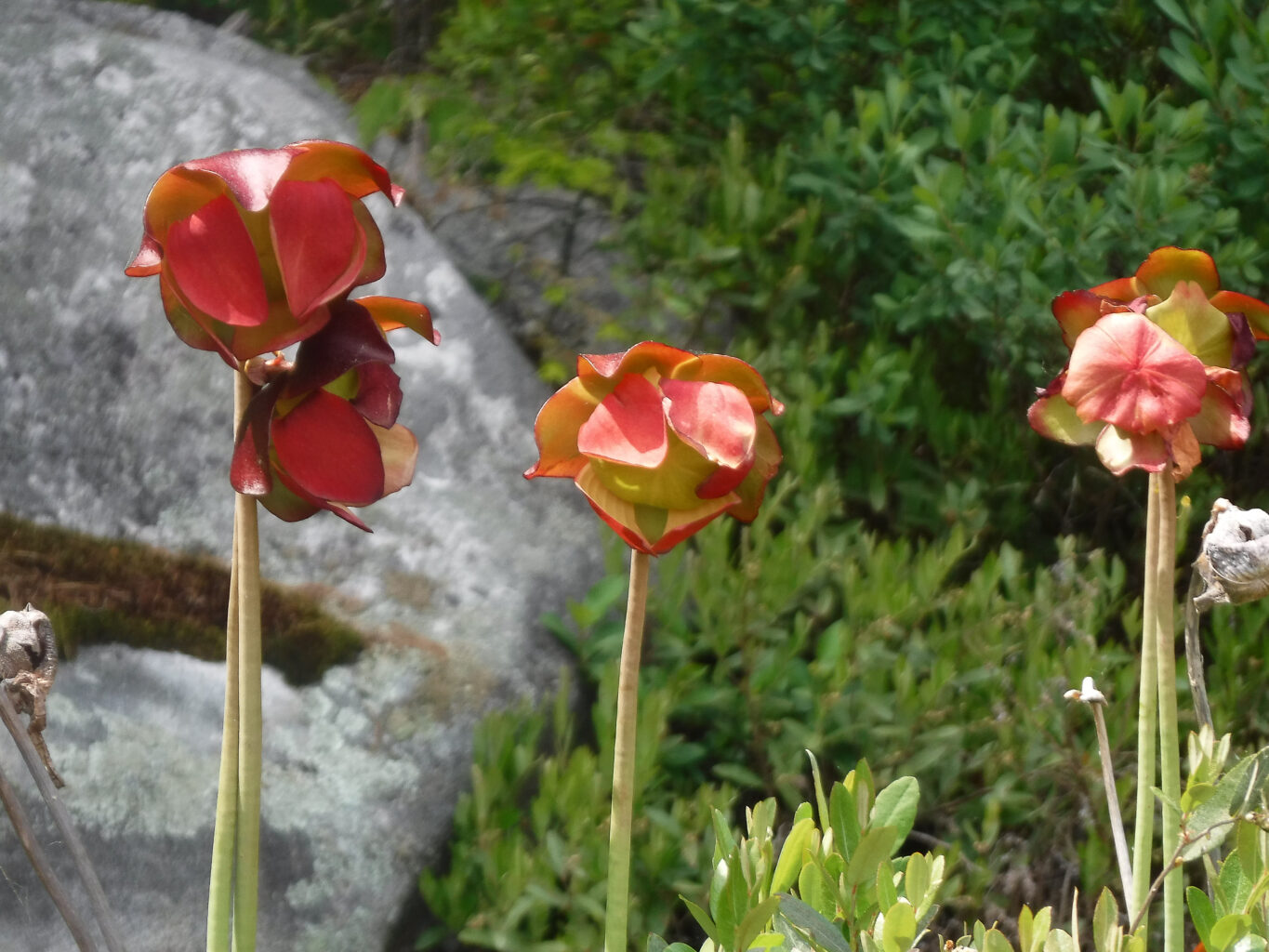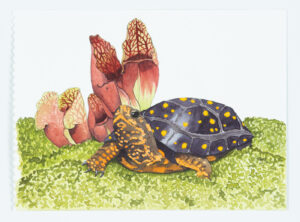The Nature of Bogs

By Chelsea Clarke Sawyer, Communications Coordinator
I can remember every bog I’ve ever visited. There’s Orono Bog, Molly Bog, the Babcock Nature Preserve bog, Moose Bog, Peacham Bog, Chickering Fen, Andromeda Bog, Colchester Bog…
And the nameless bog below Mount Katahdin I explored with my father the day after our big hike — my first time there, and his second time, 30 years after his first visit, almost to the day. A dense fog had come in overnight after our clear summit day, and the weather was perfect for moving slowly and looking closely at the tiny Roundeaf Sundews and stunted Tamaracks.
I’m not the only one who feels this way about bogs. The authors of Wetland, Woodland, Wildland say, “Entering a bog … is likely to be a long-remembered experience. There is an otherworldly character to bogs that is unlike any other part of our Vermont landscape.” But what makes these peatlands so memorable?
Bogs and fens feel different from the rest of the New England landscape because they are different, starting with the hydrology. Most New England bogs form in glacial kettle holes, where naturally acidic, nutrient-poor rainwater accumulates, stagnant and isolated from the flowing groundwater that carries minerals and oxygen into other wetlands. Sphagnum Moss is one of the few species that can thrive under these conditions, and it actually reinforces them in a positive feedback loop that keeps bogs cold, wet, and acidic. The moss retains water, keeping the area saturated; insulates the bog, keeping it cold throughout the summer; and further acidifies its environment by exchanging positively charged mineral cations for negatively charged hydrogen anions. This permanent saturation with cold, acidic, low-oxygen, low-nutrient water suppresses microbial activity, allowing the fast-growing Sphagnum to accumulate in annual layers of peat faster than it can decompose. Some New England bogs have been slowly filling in with peat for thousands of years, starting soon after the retreat of the Laurentide Ice Sheet!
 Besides Sphagnum, very little can grow in such challenging conditions. Heath shrubs usually found much farther north, like Leatherleaf, Bog Laurel, Bog Rosemary, and Labrador Tea, along with stunted Black Spruce and Tamaracks grow on raised hummocks where the Sphagnum is slightly less saturated. Most of these plants are evergreen — it takes a lot of mineral nutrients to produce a full set of new leaves each year, and keeping the old ones as long as possible is a good strategy in such a nutrient-poor environment.
Besides Sphagnum, very little can grow in such challenging conditions. Heath shrubs usually found much farther north, like Leatherleaf, Bog Laurel, Bog Rosemary, and Labrador Tea, along with stunted Black Spruce and Tamaracks grow on raised hummocks where the Sphagnum is slightly less saturated. Most of these plants are evergreen — it takes a lot of mineral nutrients to produce a full set of new leaves each year, and keeping the old ones as long as possible is a good strategy in such a nutrient-poor environment.
The carnivorous Purple Pitcher Plants and Roundleaf Sundews that grow in the wetter bog hollows use a different strategy, supplementing what little nutrients are available in the bog by trapping insects and absorbing the nitrogen from their bodies. Pitcher plants also get a boost from nitrogen-fixing bacteria that colonize the rainwater that accumulates in their pitchers.
While all of these adaptations and feedback loops are fascinating, they don’t fully explain what makes bogs so memorable. What really draws me to bogs is that they feel like little pieces of the Boreal Forest hundreds of miles to our north, or thousands of years in our past, right here in present-day Vermont. They make me feel wild and free in a way that no other landscape does.

